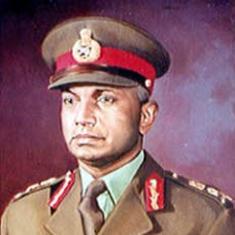Prime Minister Narendra Modi’s visit to Iran last week has been hailed as an event that strengthens ties between New Delhi and Tehran. As Modi said at the joint press conference with President Hassan Rouhani, the friendship between the India and Iran is not new – it is, in fact, “as old as history”.
“Through centuries, our societies have stayed connected through art and architecture, ideas and traditions, and culture and commerce,” Modi said.
Hopefully, this, if nothing else, will act as a useful reminder to many among us who believe that everything beautiful and wondrous was born in India and was then gifted to the world, ignoring the fact that cultural exchange is a historical reality.
Persian culture deeply impacted India several centuries ago, as is evident even in some aspects of Hindustani music. One of the more overt influences is the use of Persian poetic texts in various Indian forms, including khayal and tarana.
The sixth episode in our series on raag Yaman features Amir Khan, a path-breaking vocalist and the founder of the Indore gharana, singing a Persian text in the khayal form. Though Khan informs the listeners that the quatrain was written by Amir Khusro (1253-1325), another source mentions Köçek Mustafa Dede (died 1688/9) as the composer.
Composed in the raag Yaman, the khayal is set to jhumra – a cycle of 14 matras or units of time.
True to his style, Khan elaborates unhurriedly, delving deep into the lower octave before moving to higher notes. Later, he shifts to a section that focuses on several permutations and combinations of sargam or solfège patterns, sung at different speeds.
The second track is a drut, or fast composition, sung by Khan in raag Yaman set to the 16-matra Teentaal. The text of this composition was written by the maestro’s wife, whom he addressed as Khalifan, and the melody composed by Khan. Once again, he dwells upon a rich variety of taans or quick melodic patterns sung in sargam and aakar or using the vowel "aa".










